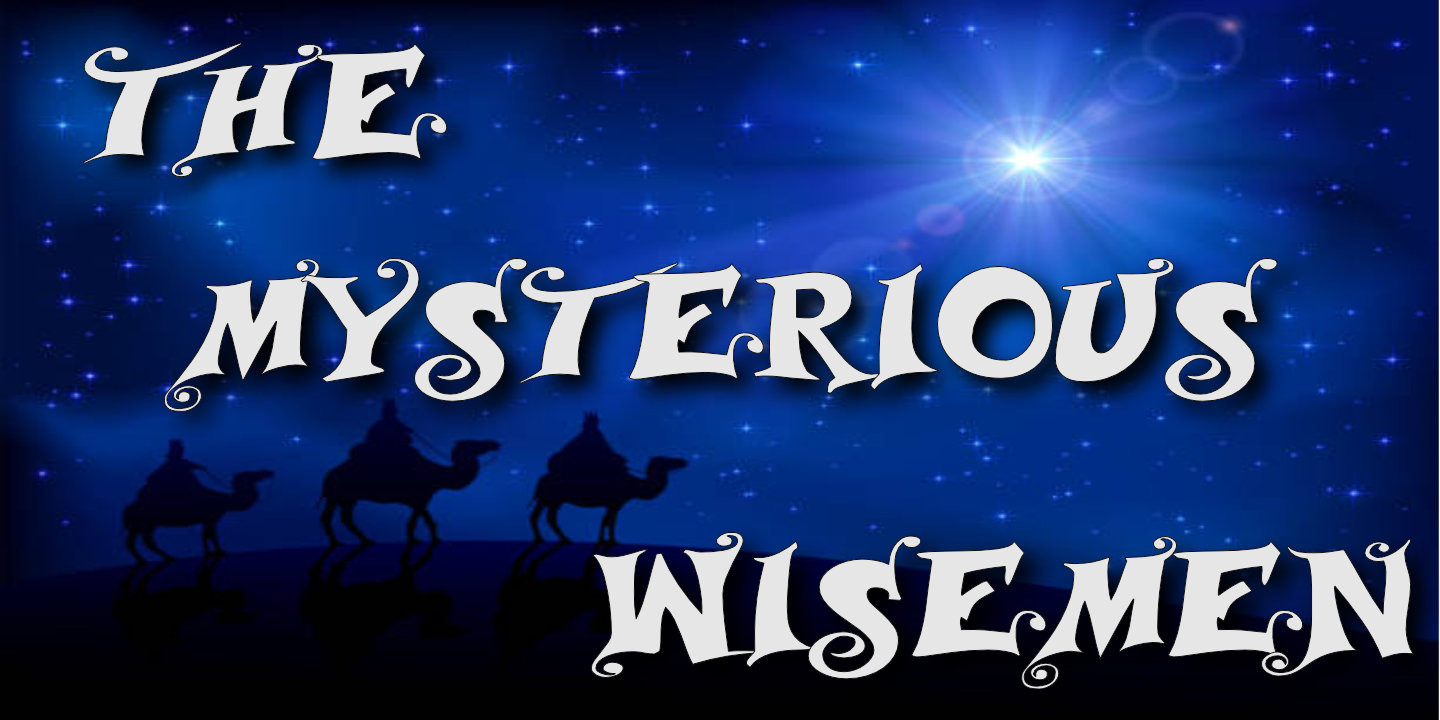
Matthew 2:1-2
The Biblical account of the Wisemen’s worshipful visit to the Christ Child is recorded in Matthew 1:1-12. It is here that we are introduced to the Wisemen from the East, the Star of Bethlehem, Herod the King of Judah, Mary and Joseph, and Jesus Christ.
This account stands in stark contrast to the traditional pictures that we are accustomed to see at Christmas time, where we see the visit of three kings from the East bearing precious gifts to the Christ Child lying in a manger.
The traditional pictures of Christmas (as seen on Christmas cards, store windows, nativity scenes under the tree and in front yards, artist’s conceptions on canvas, and in church and Sunday School Christmas programs) with the “Magi” visiting the manger—DID NOT come from the Bible! The origin of these ideas is rather uncertain, but one thing is certain, they did not come from the Bible!
This calls our attention to a dangerous problem. Since many people have gained their ideas of what the Bible teaches from works of art, hymnology, tradition, theater, TV, story books, etc., we must warn people to be careful to get their Bible knowledge from the Bible and not from “fluffy head’s notebook.”
WHO WERE THE WISEMEN?
The word translated “Wisemen” is the Persian title for teachers. It is doubtful that they were kings at all but, rather, Persian Teachers or astrologers. This would explain their great interest in the “star” which they had seen in the East.
The idea that there were only three Wisemen is an assumption based on the fact that three precious gifts were given (Mt. 2:11). The truth is, we don’t know how many Wisemen there actually were.
We do knot that they were believers. First, it would take great faith or great curiosity to bring them on the long journey of several thousands miles by horseback. (Could you imagine a Persian riding a camel?) Secondly, they came prepared to “worship” Christ (Mt. 2:2, 11); and thirdly, they were obedient to God’s warning.
HOW DID THE WISEMEN KNOW ABOUT CHRIST AND HIS STAR?
First … According to Genesis 25:6, Abraham gave gifts to his other sons and sent them away “unto the east country.”
Second …It is possible that Balaam, the Babylonian Astrologer and Prophet, may have told the Wisemen (Deut. 23:4; Num. 24:17) concerning Christ.
Third … It’s a possibility that Daniel the Prophet, who was associated with the Babylonian Wisemen (Dan. 1:20; 2:48; 4:9; 5:11-12; 9:24-27) may have influenced the other “wisemen of the Realm” and may even had converts! We know that Daniel, Esther, Ezra and Nehemiah were greatly used of God to influence the thinking and actions of such Babylonish Kings as Nebuchadnezzar, Belchazzar, Cyrus, Xerses and Artaxerxes.
Fourth … It’s possible that such wonderful knowledge may have come from the Holy Scriptures. We know that the Book of Daniel was written in the Syrian and Chaldean languages.
WHEN DID THE WISEMEN COME TO BETHLEHEM?
It is certain that the Wisemen did not reach Jesus Christ until He was nearing two years of age. Matthew refrains from referring to Jesus as a baby or infant but, rather, calls Him a “young child” (Mt. 2:9, 11, 13-14).
The Wisemen find Mary and the Lord Jesus in a house not a manger. Between chapters one and two of Matthew, we find (1) Mary and Joseph had taken Jesus to Jerusalem, after six weeks, to offer the sacrifices according to Leviticus 12:1-8 (see also Luke 2:22); (2) then, they returned to Nazareth (Lk. 2:39); and (3) now, nearly two years later, Joseph and Mary are in a house in Bethlehem (Mt. 2:7, 11, 16).
Herod based his decision to kill all the male children “two years and under,” upon the information he had received from the Wisemen.
THE GIFTS THE WISEMEN BROUGHT
It is not surprising that the Book which emphasizes Jesus Christ as King (Mt. 2:11) should mention the Kingly gift of gold. Gold is the royal gift. Jesus Christ, as the Son of David, is the King of Israel.
Frankincense was one of the ingredients in the perfume of the Golden Altar (Ex. 30:34). The life of Christ was lived as a fragrance of worship and praise to God. Jesus lived a sinless life (Lk. 1:35; Jn. 8:46; Heb. 4:15; 9:14; 1 Pet. 1:22). Frankincense was a fitting gift for one who would “propitiate” the Father—a gift of Holiness—symbolic of Christ’s qualifications to do the Father’s will, fulfill the Law’s demands, become sin for us and die on the Cross, and by the cross ALONE redeem the world.
Myrrh, the gift of death. It was used in the ancient world to prepare dead bodies for burial. Nicodemus used 100 pounds of myrrh to prepare the body of Christ for burial (Jn. 19:39).
Myrrh was the most significant of all the gifts brought by the Wisemen because Jesus Christ is the suffering Savior (Ps. 22:1), Who was born to die (Isa. 53:2-3, 5-8; Dan. 9:26). The Wisemen, in this regard, are representative of us in that they brought Christ the gift of death; even as we are told “He was delivered for our offenses” (Rom. 4:25).
Now that we are saved, can’t we bring Him the gift of a life lived for Him?
“He died for all, that they which live should not henceforth live unto themselves, but unto Him which died for them and rose again” (2 Cor. 5:15).
